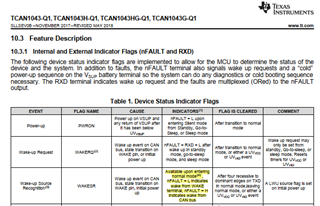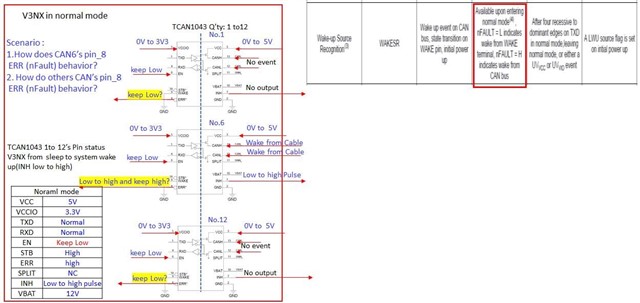Other Parts Discussed in Thread: TCAN1043
Hi sir,
My customer is using 12 sets CAN transceiver, if we need to know which set remote CAN device makes the system wake up, how does system recognize it?
I saw below table in datasheet, does it mean the system MCU have to read nFAULT flag on all 12 set CAN transceiver after it was wake up by remote CAN ECU?

Thank you.


